 |
 |
 |
| |
Incidence of hypertriglyceridemic waist (HTW) phenotype in a randomized prospective trial comparing atazanavir/ritonavir (ATV/r) and lopinavir/ritonavir (LPV/r) each in combination with tenofovir DF/emtricitabine (TDF/FTC) in antiretroviral naive HIV-1 infected subjects, a sub-study of CASTLE
|
| |
| |
Reported by Jules Levin
14th International Workshop on Co-morbidities and Adverse Drug Reactions in HIV, 19-21 July 2012, Washington DC, USA
Graeme Moyle,1 Helene Hardy,2 Wenhua Hu,3 Rong Yang,3 Victoria Wirtz,3 Michelle DeGrosky,3 Donnie McGrath3
1Chelsea and Westminster Hospital, London, United Kingdom;
2Bristol-Myers Squibb, Plainsboro, NJ, USA;
3Bristol-Myers Squibb, Wallingford, CT, USA
Excerpt from NATAP IAC Metabolics/Inflammation report by David Wohl, MD:
Moyle and colleagues examined data from the CASTLE Trial (a comparison of atazanavir/ritonavir to lopinavir/ritonavir in treatment naïve patients also taking tenofovir/emtricitabine) to detect differences between the study arms in patterns of fat changes across CD4 and BMI ranges (1). They also looked at the incidence of what they call hypertriglyceridemic waist (HTW) phenotype, defined as elevated triglycerides (>177 mg/dL in men, >133 mg/dL in women) plus a high waist circumference (>90 cm in men, >85 cm in women). CT scans through the belly and whole body DEXA scans were used to measure regional fat. Of the 224 people included, 30% were women, 60% were non-white and median BMI was 24 kg/m2. Over 96 weeks, participants in both groups had an increase in waist to hip ratio and gained fat but the increase in fat was significantly greater for atazanavir (29%) versus lopinavir (15%). Subgroup analyses found that CD4 cell count and BMI drove these results. Only those with CD4 cell counts below 50/mm3 had significant changes in limb and subcutaneous fat and this was greater with atazanavir therapy. Visceral fat did not increase significantly in either study group when stratified by CD4. Likewise, those with a BMI <22 had significant gains in limb and subcutaneous fat (but not visceral fat) over 96 weeks on atazanavir, while there was no major change in any fat depot during therapy with lopinavir across BMI tertiles. Differences between treatment arms again showed greater gains in visceral and subcutaneous fat with atazanavir in those with lowest BMI. Despite these results, the incidence of HTW was greater in the lopinavir arm (18% versus 10%), a consequence of the greater increase in triglycerides on this regimen. While the authors concentrate on the HTW results and the potential for the combination of elevated waist circumference and hypertriglyceridemia, the study also demonstrates a) sicker people tend to gain more fat than those who start therapy earlier, b) the fat gained was mostly pinch-an-inch-fat and was generalized rather than sequestered to the midsection, and c) atazanavir/ritonavir clearly can lead to gains in fat, including visceral fat - here seen in those with low CD4 counts at baseline - above what is seen with lopinavir/ritonavir.


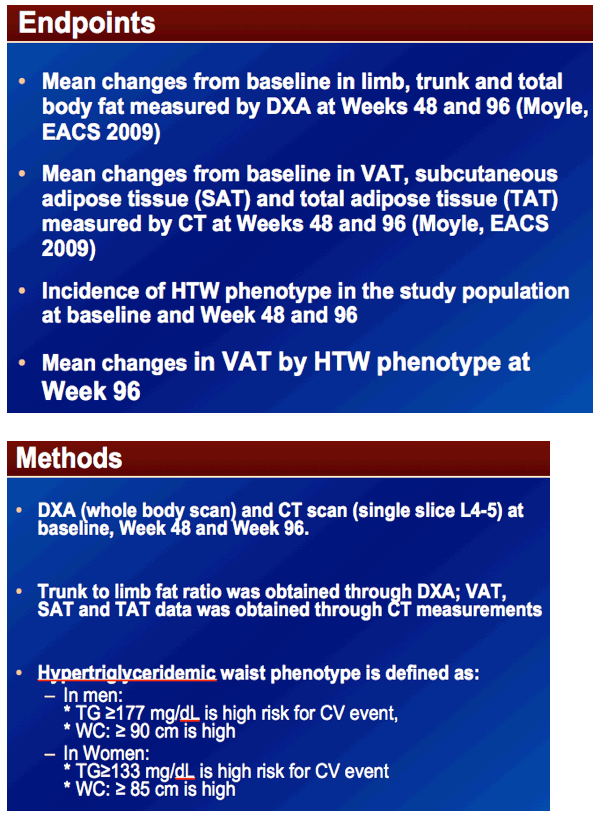
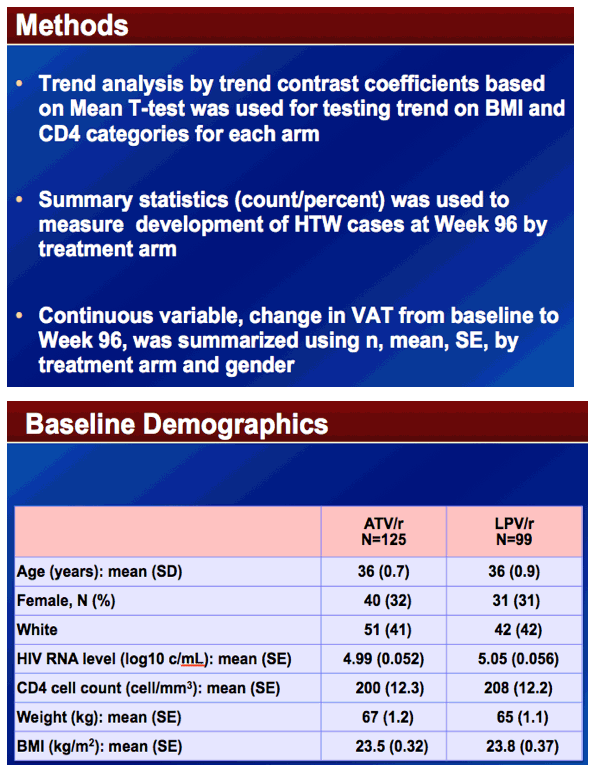
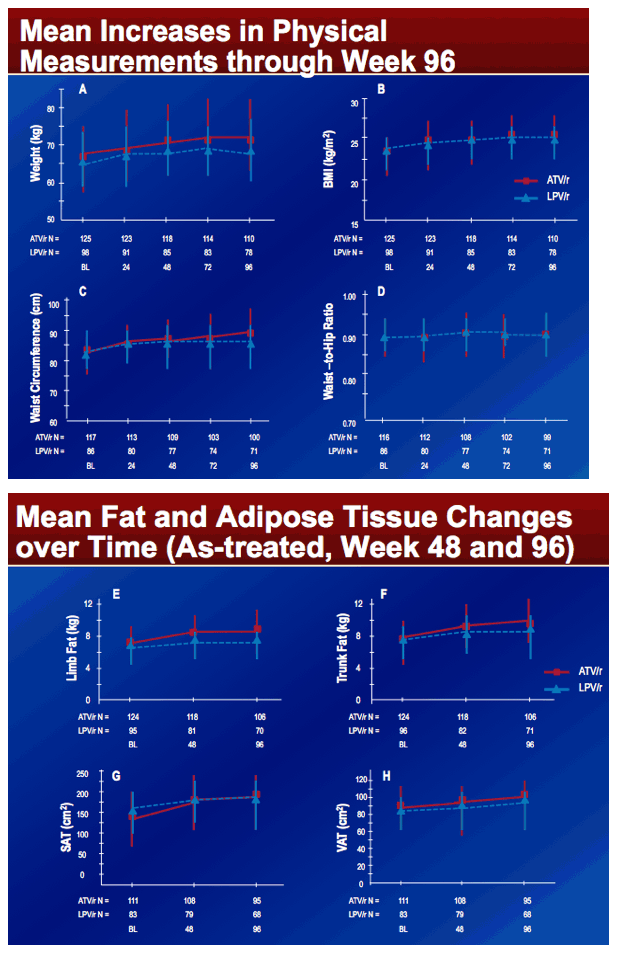
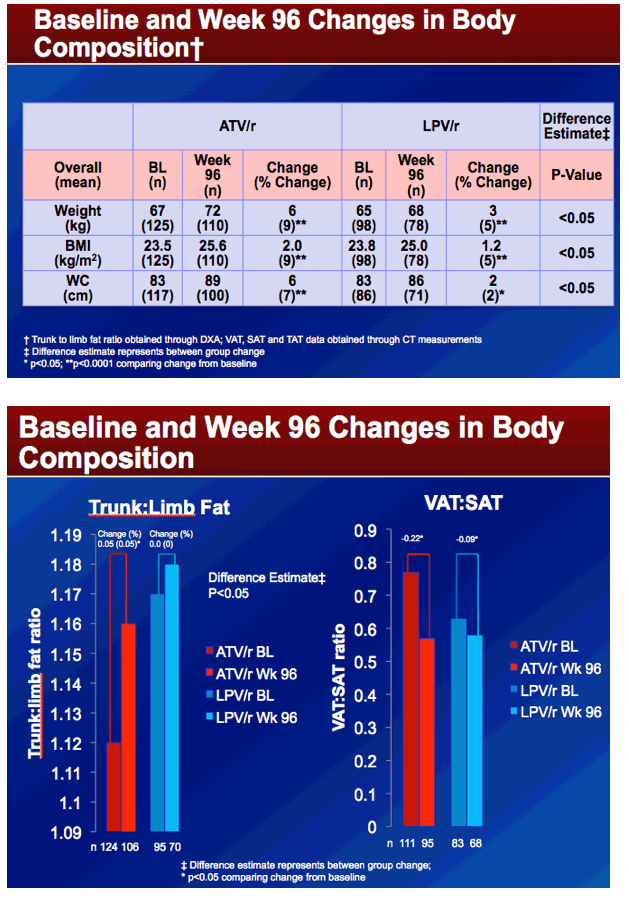
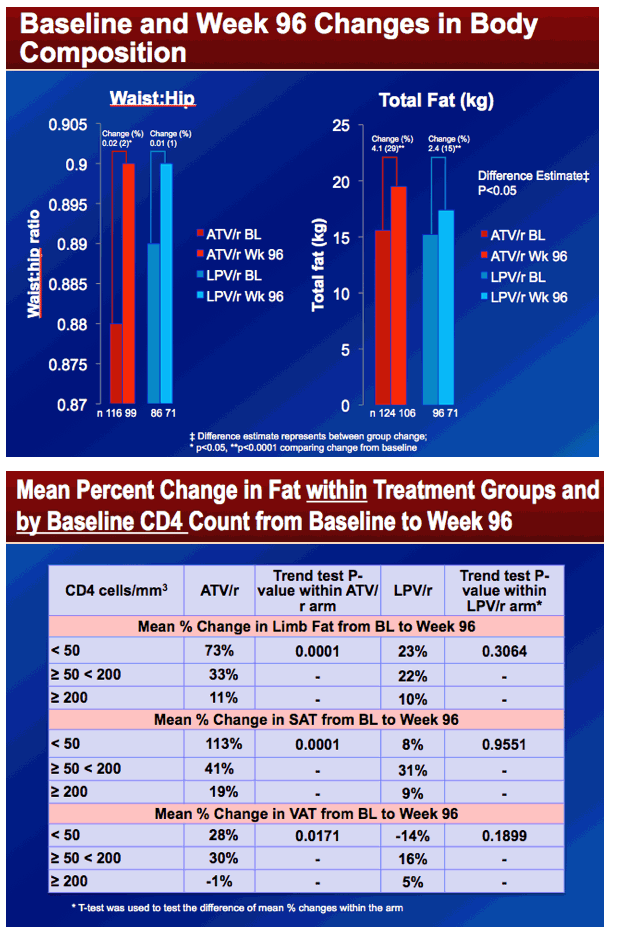
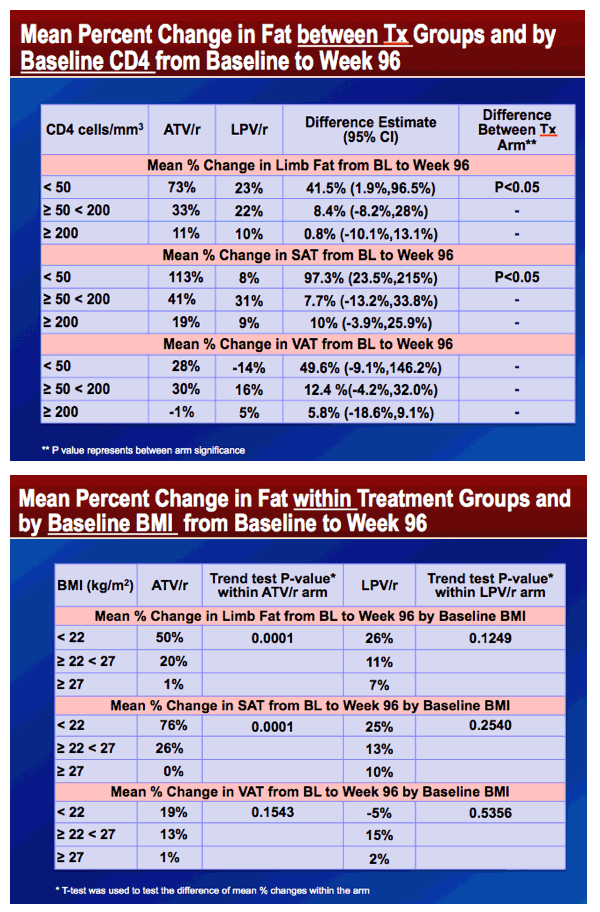
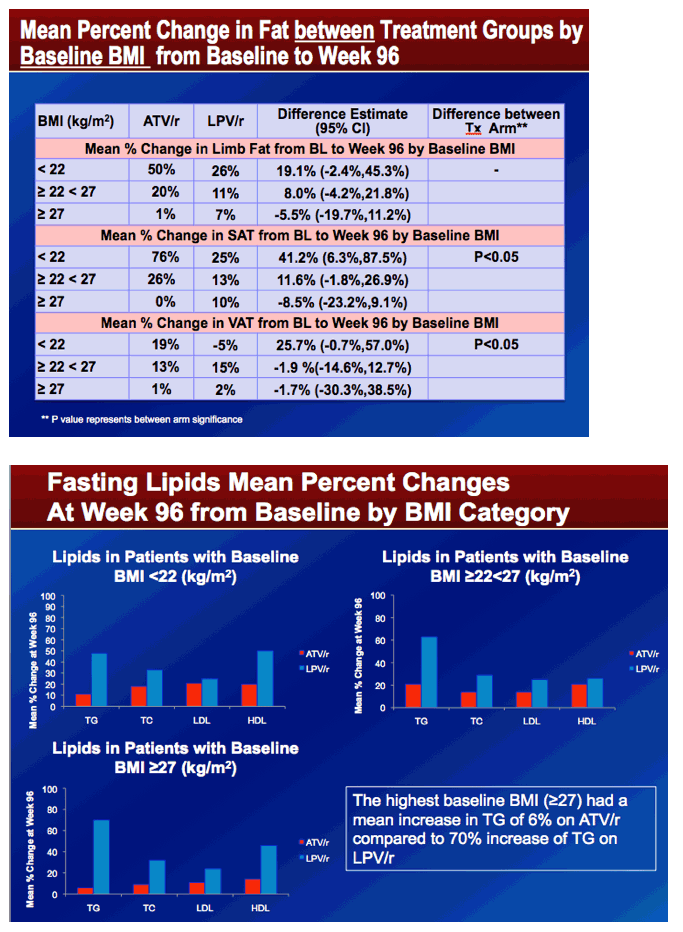
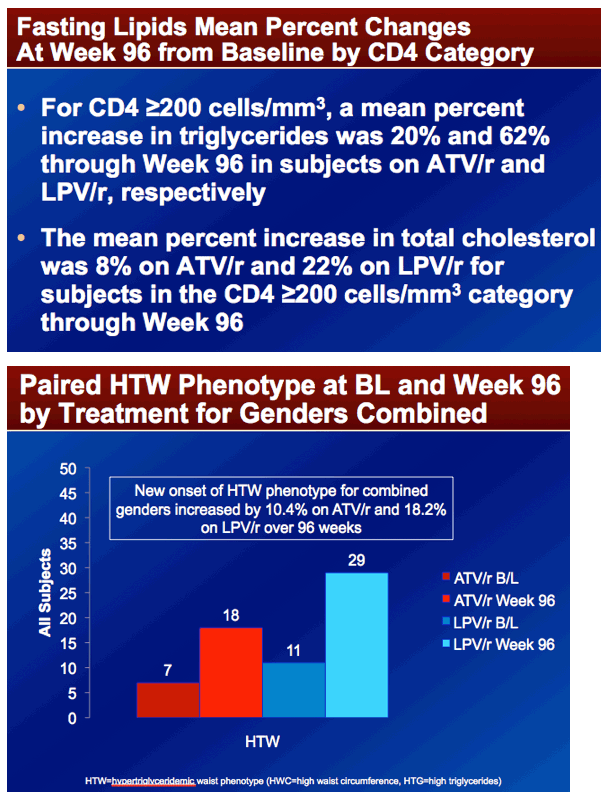
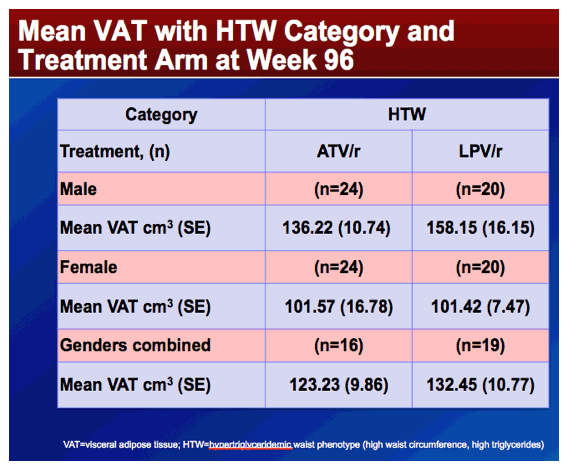
|
| |
|
 |
 |
|
|